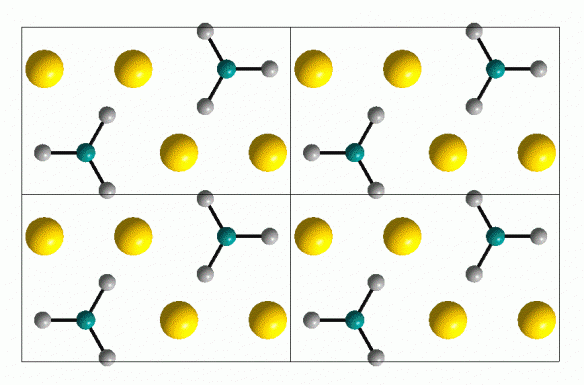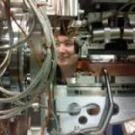June birthstone – Pearl
June is a lucky month; it has two possible birthstones, both crystalline. We have already talked about one of the possible birthstones – moonstone. The other option is a Pearl, made up of a variant of CaCO3 – Aragonite.
What does it look like?

The aragonite structure, CaCO3. Ca is yellow, C is green and oxygen is grey. This picture was made using the Diamond crystal structure visualisation software package.
What is it?
Pearls are produced naturally by molluscs as a way of removing irritants from their shells. This irritant is usually a parasite rather than a particulate irritant such as sand. In theory any mollusc can produce a pearl but the best quality pearls with the best iridescence are produced by oysters.

Diagram comparing a cross-section of a cultured pearl, upper, with a natural pearl, lower. Taken from http://en.wikipedia.org/wiki/Pearl
Cultured pearls are grown by introducing a tiny piece of foreign tissue from another shell. This then starts the growth of a pearl sac and ultimately the precipitation of aragonite and a pearl. Cultured pearls are distinguished from their natural counterparts by an X-ray. The figure below shows the internal structure of a cultured vs natural pearl. Both are built up of layers but the layers are oriented differently.
Where did the structure come from?
This structure is from: Antao, S. M. and I. Hassan (2009) The orthorhombic structure of CaCO3, SrCO3, PbCO3 and BaCO3: Linear structural trends. The Canadian Mineralogist 47 1245 and is available on the AMCSD.






